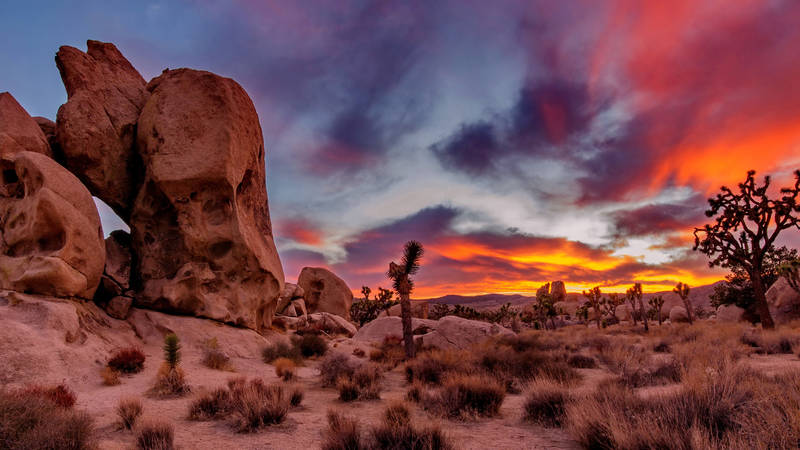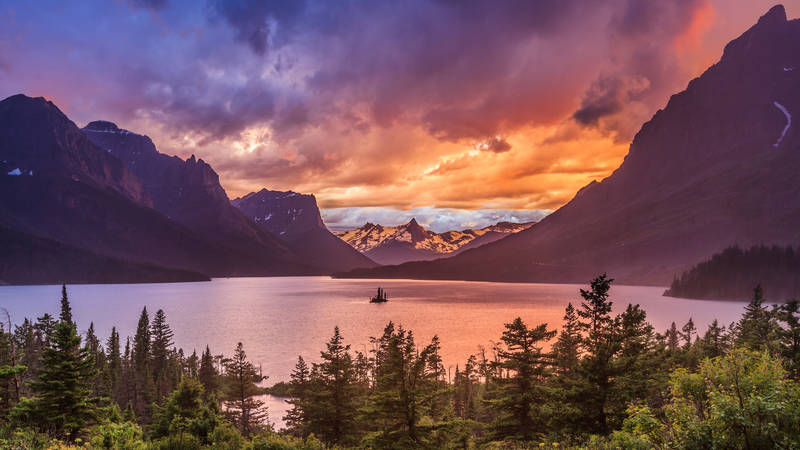Today's decision will limit the abilities of the Environmental Protection Agency to do its job, and the consequences for the climate could be disastrous.
The Supreme Court’s decision is a blow to years of efforts to clear the air in our national parks and protect their visitors, wildlife and water.
The Supreme Court ruled today that the Environmental Protection Agency does not have the authority to shift energy generation under the Clean Air Act to regulate climate-warming carbon dioxide emissions from power plants, forcing congressional action on comprehensive national efforts to regulate greenhouse gases. The ruling strips EPA’s congressionally delegated power to regulate systems for limiting these emissions leaving a void in policy that Congress must immediately fill to curb greenhouse gas pollution in the atmosphere.
“Capping carbon dioxide emissions at a level that will force a nationwide transition away from the use of coal to generate electricity may be a sensible ‘solution to the crisis of the day,’” Chief Justice John Roberts wrote. “But it is not plausible that Congress gave EPA the authority to adopt on its own such a regulatory scheme. … A decision of such magnitude and consequence rests with Congress itself, or an agency acting pursuant to a clear delegation from that representative body.”
This ruling comes just two weeks after Yellowstone National Park was evacuated and closed due to a devastating flooding catastrophe that swept away roads, bridges and private homes. Such natural disasters are becoming more frequent and severe as global temperatures continue to warm, and whole communities are increasingly threatened by wildfires, floods, droughts, sea level rise and other serious concerns. The court’s decision is egregiously out of step with the will of the public and the harm that people and parks are suffering in real time before our eyes.
The decision, reached on a 6-3 partisan split, will have wide-ranging and deeply harmful consequences for air quality and the health of the climate.
What is the case about?
At the heart of the Supreme Court case is a provision of the Clean Air Act (Section 111(d)) and whether it grants the EPA the ability to issue rules that effectively shift energy generation. A number of industry groups and state attorneys general brought the suit in response to an Obama-era regulation that never took effect called the Clean Power Plan.

How the Climate Crisis Is Affecting National Parks
Climate change is the greatest threat the national parks have ever faced. Nearly everything we know and love about the parks — their plants and animals, rivers and lakes, glaciers,…
See more ›In 2015, the EPA established the Clean Power Plan to create guidelines for greenhouse gas emission reductions from existing power plants, which generate electricity by burning coal or gas. The plan required power plants to limit pollution and move toward implementing less-polluting methods of energy creation.
The Supreme Court suspended the Clean Power Plan in 2016 after an initial legal challenge, and the plan was never implemented.
In 2019, the EPA under the Trump administration attempted to enact its own rule for reducing power plant emissions known as the Affordable Clean Energy Rule. The rule advised coal plants to upgrade technologies to reduce emissions but only mandated changes that could be accomplished at individual power plants and was projected to result in increased emissions overall. The rule was far less ambitious than the Clean Power Plan, which sought to reduce greenhouse gas emissions from power plants by 32% ― a goal that was nonetheless achieved even though the Clean Power Plan never went into effect. In 2021, the DC Circuit Court vacated the Affordable Clean Energy Rule and stayed the Clean Power Plan.
As a result, there is no rule in place today regulating greenhouse gas emissions from power plants, and the EPA asserted that the case was moot because the agency had no intention of resurrecting the Clean Power Plan. Some experts have therefore questioned whether the case is within the court’s jurisdiction, since there is no longer any dispute to resolve.
How will the EPA’s authority change as a result of the ruling?
The court’s ruling has stripped away elements of EPA’s delegated authority, requiring an act of Congress to shift energy generation to clean, renewable sources.
The plaintiffs in today’s case questioned whether federal agencies have the ability to create regulations as well as enforce them, arguing that this “administrative state” is inappropriate for government officials and that rulemaking is the role of Congress. For decades, however, federal agencies have performed these essential duties using the authority Congress delegated to them under bedrock laws such as the Clean Air Act and Clean Water Act.
As Justice Elena Kagen pointed out in the dissenting opinion, “Over time, the administrative delegations Congress has made have helped to build a modern Nation. Congress wanted fewer workers killed in industrial accidents. It wanted to prevent plane crashes and reduce the deadliness of car wrecks. It wanted to ensure that consumer products didn’t catch fire. It wanted to stop the routine adulteration of food and improve the safety and efficacy of medications. And it wanted cleaner air and water. If an American could go back in time, she might be astonished by how much progress has occurred in all those areas. It didn’t happen through legislation alone. It happened because Congress gave broad-ranging powers to administrative agencies, and those agencies then filled in — rule by rule by rule — Congress’s policy outlines.”

National Climate Change Poll
A new poll by the National Parks Conservation Association found that national parks offer physical and political solutions for addressing climate change.
See more ›Congress is not a scientific body with expertise on environmental health, yet EPA staff who are trained in these very disciplines could be hamstrung by and at the mercy of elected politicians wading into areas of science where they have little knowledge, let alone expertise. With Congress perennially deadlocked and unable to accomplish meaningful progress on climate regulation, reinventing the scope of Clean Air Act authority and transferring power from the EPA to Congress severely hinders the country’s ability to reach its climate goals. This landmark ruling could have devastating consequences for our national parks, wilderness areas and surrounding communities, many of which are already struggling with wildfires, flooding, excessive heat and other climate-induced problems.
More broadly, this decision could stymie efforts to regulate other threats to public health and public lands, such as water pollutants and tailpipe emissions. The Supreme Court is scheduled to hear a case in its next term (Sackett v EPA) that challenges the EPA’s jurisdiction to protect waters under the Clean Water Act and could, if similarly decided by the court, remove protections from the majority of wetlands in the United States. Today’s decision could also impact the rulemaking of other federal agencies, stifling efforts to keep regulations up to date with developments in science and technology.
Is there any recourse to this decision?
This ruling is a wake-up call to Congress that it must act on comprehensive climate legislation now. The president could also declare climate change a national emergency under the National Emergencies Act, which would give the executive branch broader authority to take essential measures to regulate pollution and enforce reduction targets, among others.
How will this decision affect parks?
Every single one of our national parks is suffering from the effects of climate change, from record breaking wildfires and droughts to rising sea levels and the destruction of cultural resources. A 2018 scientific study found that national parks are warming at twice the rate of other parts of the country and suffer disproportionate harm from the climate crisis.

Facing the Climate Catastrophe: What We Do Now Matters
The forecast on climate is stark, but the Biden administration can take meaningful action now to help avoid the worst effects of the crisis.
See more ›The Supreme Court’s decision will only make matters worse, letting polluters off the hook for putting park visitors, wildlife, and cultural and natural resources in jeopardy.
As Justice Kagen wrote in the dissenting opinion, “The Court today prevents congressionally authorized agency action to curb power plants’ carbon dioxide emissions. The Court appoints itself — instead of Congress or the expert agency — the decisionmaker on climate policy. I cannot think of many things more frightening.”
The Supreme Court’s decision is a blow to years of efforts to clear the air in our national parks and protect their visitors, wildlife and water.
Stay On Top of News
Our email newsletter shares the latest on parks.
Climate change is one of the most significant threats our national parks face, and according to NPCA’s recent national poll, 88% of Americans agree. Coal plants are a known, major source of carbon dioxide pollution driving climate change and air pollution in and around our parks.
Now is the time for advocates to step up and fight even harder alongside us. The need for Congress to act has never been greater, and we will continue to work toward meaningful climate action that will make a tangible difference for people and parks.
About the author
-
 Stephanie Kodish Former Senior Director & Counsel, Clean Air & Climate
Stephanie Kodish Former Senior Director & Counsel, Clean Air & ClimateAs Senior Director and Counsel for Clean Air and Climate Programs Stephanie Kodish leads NPCA's effort to drive solutions towards a healthy climate and clean air for national parks and communities.


